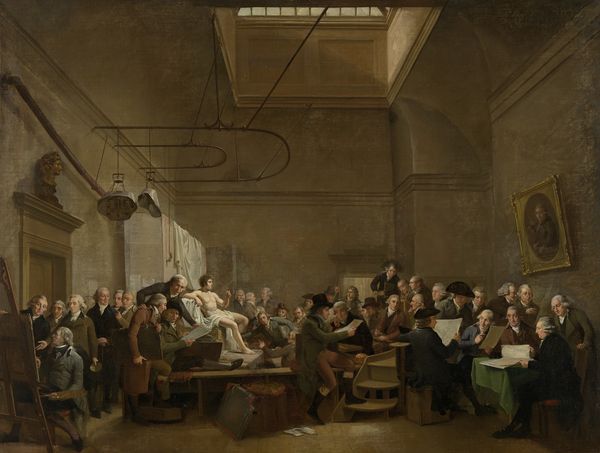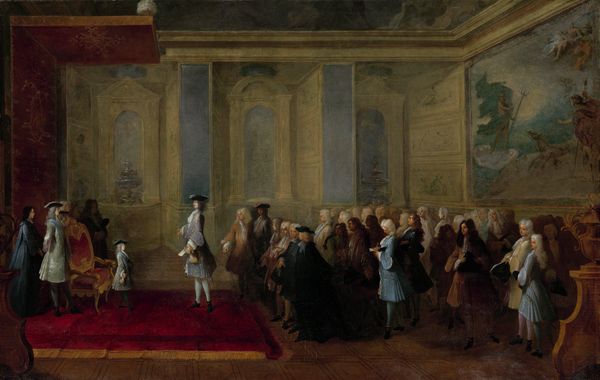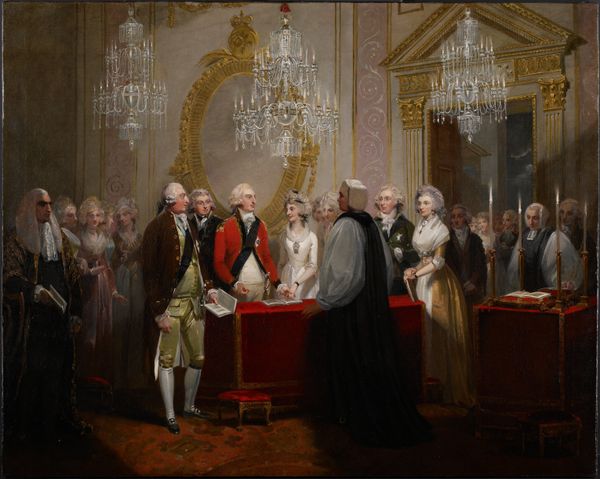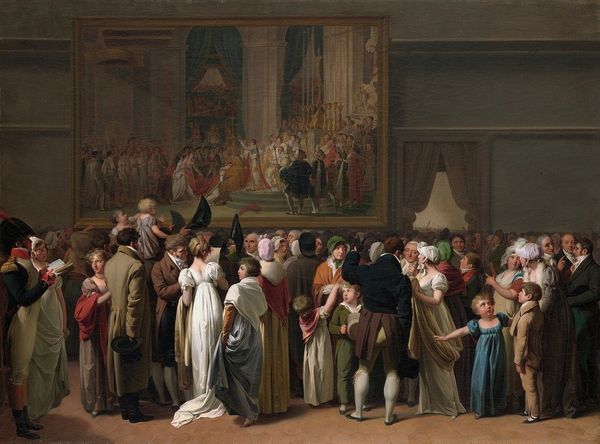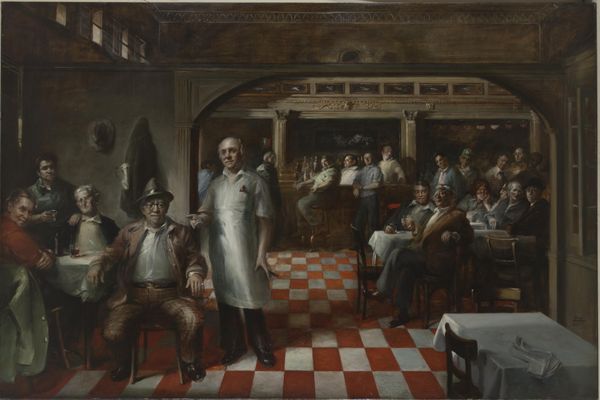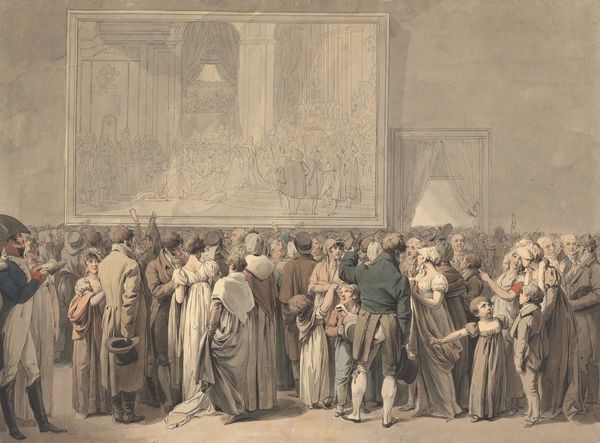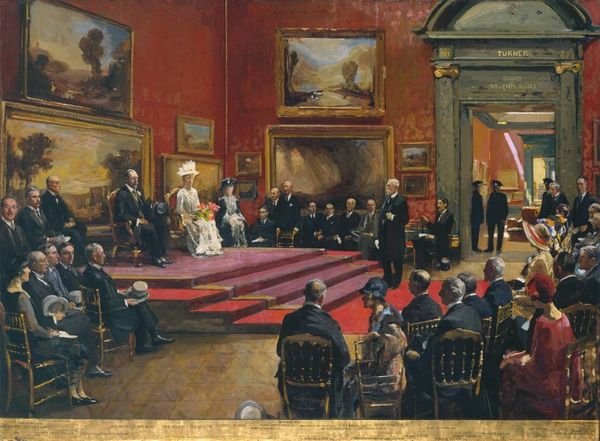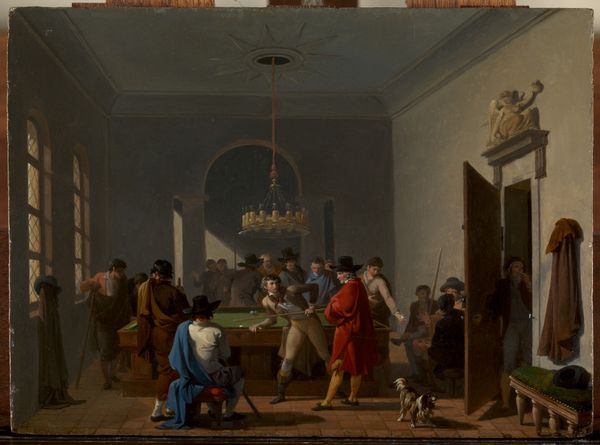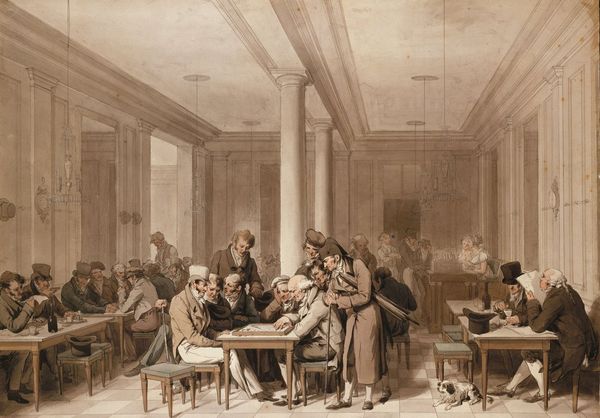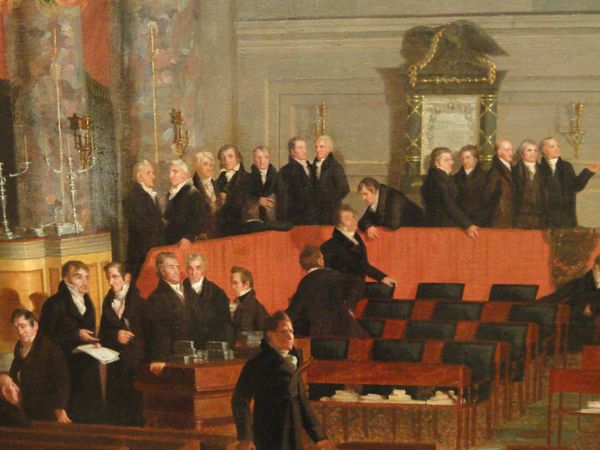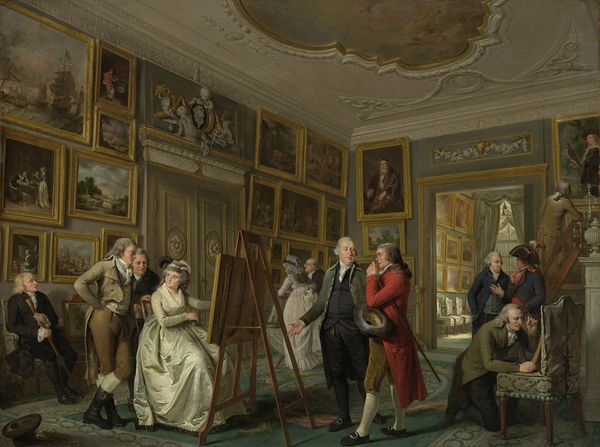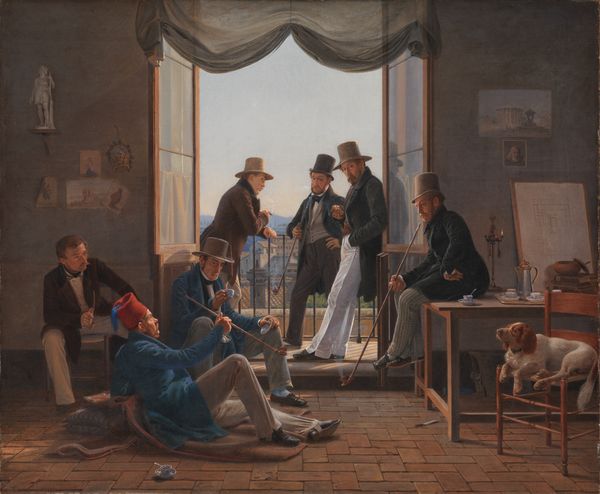
painting, oil-paint
#
neoclacissism
#
painting
#
oil-paint
#
landscape
#
group-portraits
#
genre-painting
#
history-painting
#
academic-art
Dimensions: height 100 cm, width 133 cm
Copyright: Rijks Museum: Open Domain
Curator: This oil on canvas, "The Sculpture Gallery of the Felix Meritis Society," was rendered by Adriaan de Lelie between 1806 and 1809. Notice how de Lelie masterfully uses the play of light to lead the viewer’s eye through the meticulously arranged gallery. What strikes you most about this interior scene? Editor: My immediate thought is "homogeneity." All male, all similarly dressed, observing and seemingly revering a classical aesthetic. It feels like a powerful assertion of dominance and exclusion. Curator: Certainly, the homogeneity is evident. Formally, however, one cannot deny how de Lelie directs our focus using strategically placed sculptures and the arrangement of the figures themselves. Look at how the sculpture of Apollo commands central attention, serving as a beacon of idealized beauty. Editor: Absolutely, Apollo takes center stage. But that "idealized beauty" comes at the cost of silencing other narratives. These men, engaging in their scholarly pursuits, benefited from societal structures that privileged them based on gender and class, excluding those who did not conform. The room is overwhelmingly white, mirroring the socio-political climate of the time. Curator: Indeed, the Neoclassical style prevalent here embodies the ideals of the Enlightenment: reason, order, and harmony. Observe how each figure seems captured in a moment of quiet contemplation, reinforcing the era's emphasis on intellectual discourse and refined sensibility. The composition evokes balance, proportion, and clarity—key features of Neoclassical aesthetics. Editor: And who gets to define those ideals, and benefit from their perpetuation? It's hard not to see this scene as a testament to institutional power, masquerading as a celebration of art. These men controlled the discourse; their interpretation became the canon, shaping cultural values for generations. De Lelie documented a specific, curated reality. Curator: Perhaps. But one could argue he documented a defining moment for the democratization of art appreciation at the time, even within its limitations. Note how de Lelie created visual harmony with subdued colours in muted browns, creams, and blacks, directing us to the forms themselves. Editor: I acknowledge the painterly skill on display and can only begin to appreciate its original reception. Viewing it through a contemporary lens, however, forces us to confront the less palatable truths that reside beneath its surface. Curator: It remains a compelling visual record. Thank you for highlighting its enduring tensions. Editor: A necessary complexity when examining our past.
Comments
rijksmuseum about 2 years ago
⋮
In the sculpture gallery of the Felix Meritis Society, plaster casts of sculptures from Roman museums and the Musée Napoléon in Paris were exhibited against pale blue walls. De Lelie, a member of the society, portrayed himself from the back amidst the commis-sioners and directors of the scoiety’s departments.
Join the conversation
Join millions of artists and users on Artera today and experience the ultimate creative platform.
